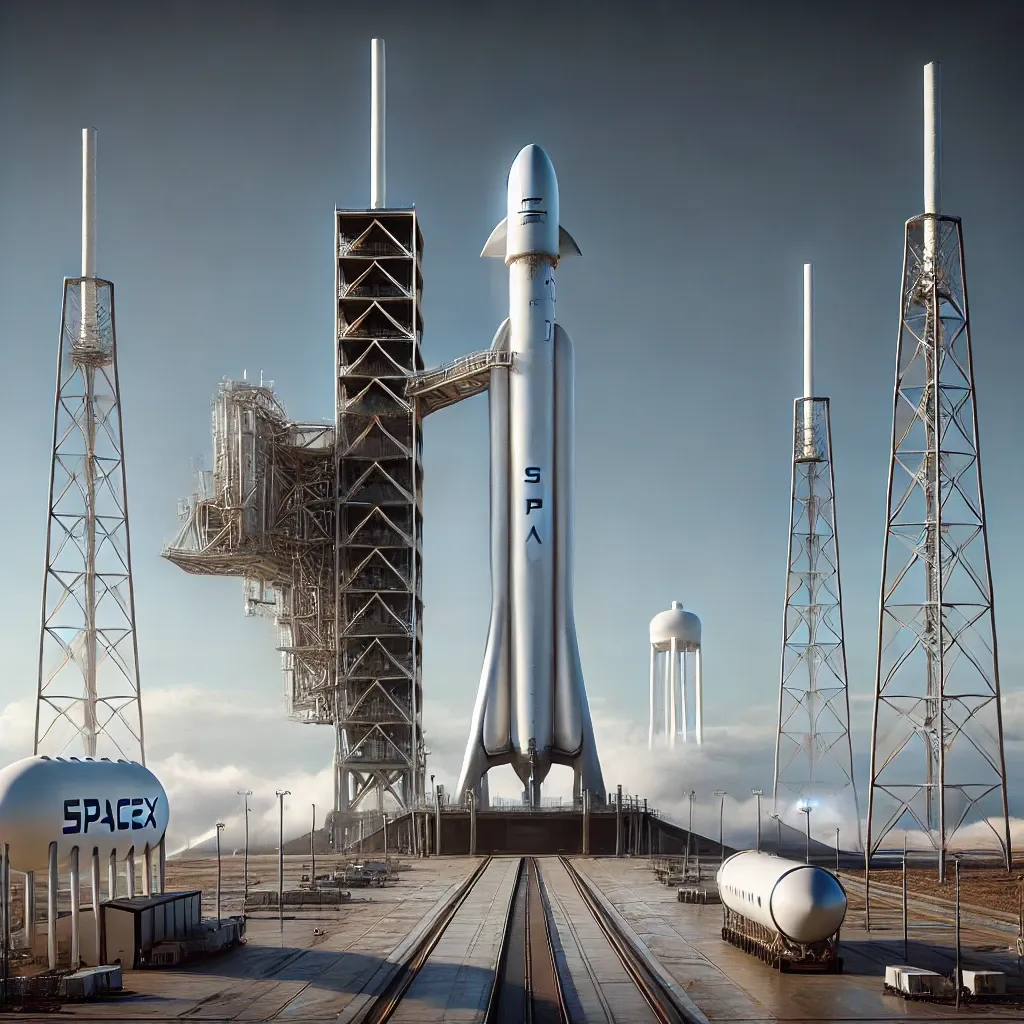Starship, the next-generation spacecraft designed by SpaceX, is set to revolutionize space travel. With its impressive scale, advanced technology, and ambitious goals, every launch brings us closer to interplanetary exploration. But what do you really need to know about Starship launches? Let’s dive into the specifics that make these events so significant and how they could shape the future of human space exploration.
Starship Launch Pad: The Crucial Foundation for Liftoff
SpaceX’s Starship launches rely on highly advanced launch pads that are meticulously designed to handle the power and size of this massive spacecraft. The primary launch site for Starship is situated at SpaceX’s Boca Chica facility in Texas, known as the Starbase. The facility is not just any ordinary launch pad—it’s a state-of-the-art spaceport equipped with advanced technology for seamless and safe launches.The sheer size of the Starship rocket demands a launch pad with immense structural strength and safety protocols. SpaceX has installed massive water-cooled steel plates underneath the launch area to mitigate the extreme heat and force generated by the rocket’s engines during liftoff. With each launch, these pads face significant stress, and improvements are constantly being made to ensure they can withstand the full force of the Starship.
- Launch pad location: Boca Chica, Texas (Starbase)
- Key structure: Water-cooled steel plates
- Recent updates: Pad expansion and additional safety measures
- Notable feature: Tower height for vertical integration of Starship with the booster
- Launch pad upgrades: Heat-resistant structures, environmental monitoring systems
The importance of these launch pads cannot be overstated. Every upgrade and reinforcement ensures that future Starship launches proceed smoothly and safely, further reinforcing SpaceX’s commitment to groundbreaking space exploration.
Starship Launch Cost: The Economics of Space Travel
One of the most intriguing aspects of Starship launches is the cost-efficiency that SpaceX aims to achieve. Traditionally, space travel has been prohibitively expensive, with launches costing hundreds of millions of dollars. However, SpaceX has always prioritized affordability alongside cutting-edge technology, and Starship is no different.The goal for Starship is to drastically reduce the cost of reaching orbit, making it possible for more missions to the Moon, Mars, and beyond. Current estimates suggest that the cost per launch could eventually fall to around $2 million, a fraction of the typical price for previous space missions. This cost reduction is achieved through a combination of reusability, advanced manufacturing techniques, and economies of scale.
- Launch cost target: Approximately $2 million per launch
- Reusability: Both Starship and its Super Heavy booster are designed to be fully reusable
- Material innovation: Use of advanced stainless steel for durability and cost-efficiency
- Impact: Potential for low-cost satellite deployment, Moon missions, and Mars colonization
- Long-term goal: Making interplanetary travel accessible to a broader range of missions
SpaceX’s ability to cut costs could revolutionize the economics of space travel. With more affordable launches, research institutions, private companies, and even space tourists may have the opportunity to explore beyond Earth’s orbit.
Starship Launch System: Breaking New Ground in Space Technology
The Starship launch system is unlike any other, featuring cutting-edge technology that pushes the boundaries of what is possible in space exploration. The entire system is designed with reusability, scalability, and efficiency in mind. At the core of the launch system is the Super Heavy booster, which propels Starship into orbit with its 33 Raptor engines. These engines are powered by liquid methane and liquid oxygen, an innovative choice that supports long-term sustainability in space travel.Once the Super Heavy booster detaches, the Starship spacecraft continues its journey using its own Raptor engines. The full system is designed for both crewed and cargo missions, making it versatile enough for a wide range of space missions, from deploying satellites to human exploration of Mars.
- Engine technology: Raptor engines with liquid methane and liquid oxygen
- Booster configuration: 33 engines on Super Heavy booster
- Spacecraft reusability: Starship is designed to return to Earth, land vertically, and be reused for multiple missions
- Flexibility: Configurable for both crewed and uncrewed missions
- Sustainability: Methane fuel allows for potential in-situ resource utilization on Mars
The advanced technology behind the Starship launch system is the key to its future success. By focusing on reusability and efficiency, SpaceX is ensuring that the system will play a major role in future space missions, not just for the company, but for the entire space industry.
Conclusion
Starship launches represent more than just another space mission—they mark the beginning of a new era in space exploration. With its advanced launch pads, cost-efficient operations, and innovative launch systems, SpaceX’s Starship is poised to become the most important vehicle in the future of space travel. As we look to the stars, remember the words of Carl Sagan: “Somewhere, something incredible is waiting to be known.”This spirit of discovery drives SpaceX and its Starship program forward, bringing humanity one step closer to exploring new worlds.






